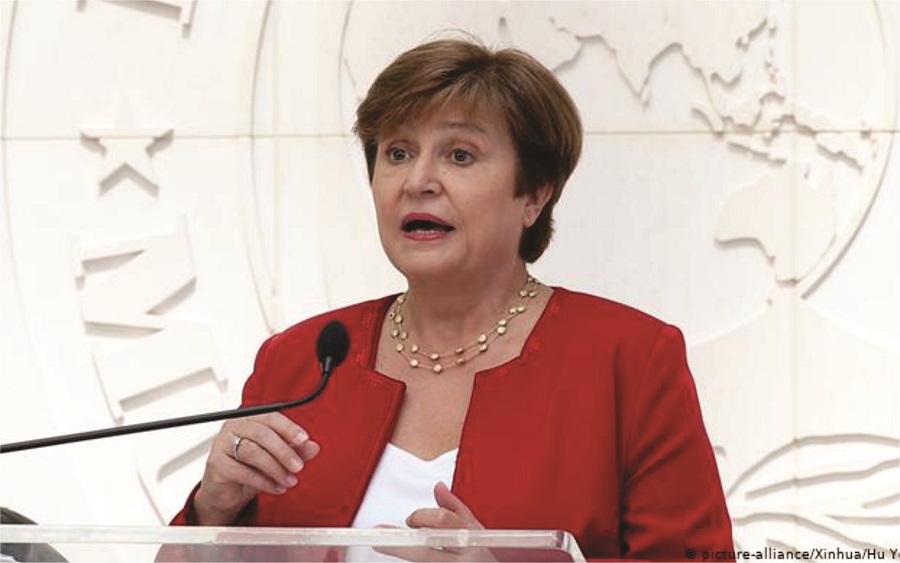It has been two weeks since the Managing Director of the International Monetary Fund (IMF), Kristalina Georgieva, announced that the IMF was proposing a global carbon price floor. In her speech, the Managing Director said, “Our research shows that [carbon pricing] provides the most effective incentive to make progress in decarbonization at the scale and the speed needed to reach the goals of the Paris Agreement.”
She went on to indicate that the proposal was still under discussion with the IMF Board and membership.
There are speculations as to whether the board would swing in favour of this proposition. As voting in the IMF is weighted, with developed countries having more voting power than emerging economies, should the G20 countries still be in the euphoria of their recent meeting where they strengthened climate commitments, the votes are likely to support the carbon price floor proposal.
However, the high carbon price ($75) proposed by the IMF for developed countries, and the disparity with that proposed for emerging economies (whether higher-income or lower-income) may be a disincentive for the board and members. In the US, for instance, the current price of carbon, even with an increase by the current administration, is pegged at $51 and at £18.08 ($25.17) in the UK.
Speaking on how the price was to be administered, the Managing Director said that the carbon price would be pegged at $75 for advanced countries, $50 for higher-income emerging economies, and $25 for lower-income emerging economies. According to her, “This scheme could help achieve a 23 percent reduction in global emissions below baseline by 2030, enough to bring emissions in 2030 in line with keeping global warming below 2°C.”
Carbon price is simply the cost attributed to carbon pollution to encourage polluters to reduce greenhouse gas (GHG) emissions, and usually includes the cost of negative externalities. When the price is set, a cap on emissions would be put in place and an emission trading market for emission permits emerges, with the expectation that the high price of carbon effectively discourages carbon-intensive activities.
As of this year, the World Bank’s Carbon Pricing Dashboard highlights 64 carbon pricing initiatives across 45 national jurisdictions.
Economists widely agree that introducing a carbon price is the single most effective way for countries to reduce their emissions. In fact, a 2017 report by the High-Level Commission on Carbon Prices revealed that the explicit carbon-price level consistent with achieving the target of 2 degrees Celsius, assuming a supportive policy environment, is at least US$40–80 per ton of carbon by 2020 and $50–100 per ton of carbon by 2030.
Yet, the possibility of a global carbon price floor is daunting. The move to include emerging economies is perhaps overly ambitious, considering that more than half of emissions from OECD and G20 countries are entirely unpriced.
Mandating carbon price floors for emerging economies, which mostly have negligible emissions in relation to the global GHG mix, is questionable. Additionally, there are a bundle of peculiar challenges that emerging economies face, including the low level of development, high level of poverty, absence of social safety nets, weak institutions and unstable economic and political structures.
For an oil-fed economy and coal-rich economy like Nigeria, for instance, the political will to implement such carbon price hardly exists.
Critics have also kicked against differentiated pricing for carbon in different parts of the world, arguing that a ton of carbon anywhere in the world is the same and has the same effect, and so should be priced the same. There are also concerns that differentiated pricing could create pollution havens in emerging economies, as heavy emitting developed countries could push their carbon projects to these countries to benefit from lower emission prices, thus worsening the health and environmental challenges there and exacerbating the climate crisis.
With lack of strong institutions, unavailability of data, poor monitoring and underdeveloped markets in many emerging economies, establishing and enforcing pricing may be difficult and market rigging may be a likely occurrence. For instance, many may trade emission permits at lower prices if offered bulk and regular purchases by large developed-country carbon-intensive project developers.
Undoubtedly, the benefits of a carbon floor and a thriving carbon market in emerging economies abound. For one, it would spur the transition while strengthening the economy and providing revenue for the government to utilise for other development work. However, for a mandatory carbon price floor to work in emerging economies, carbon pricing must be integrated into other non-price mechanisms across various industries and all of these must be developed as a comprehensive strategy.
Perhaps another grey area for the IMF’s proposal is if the carbon price floor would only apply to carbon or other GHGs like methane, nitrous oxide, and perfluorocarbons. It is expected that before the IMF finally launches the price floor, should it get the votes it requires, a multi-stakeholder engagement to build robust pathways for implementation, especially in emerging economies, would be developed.























